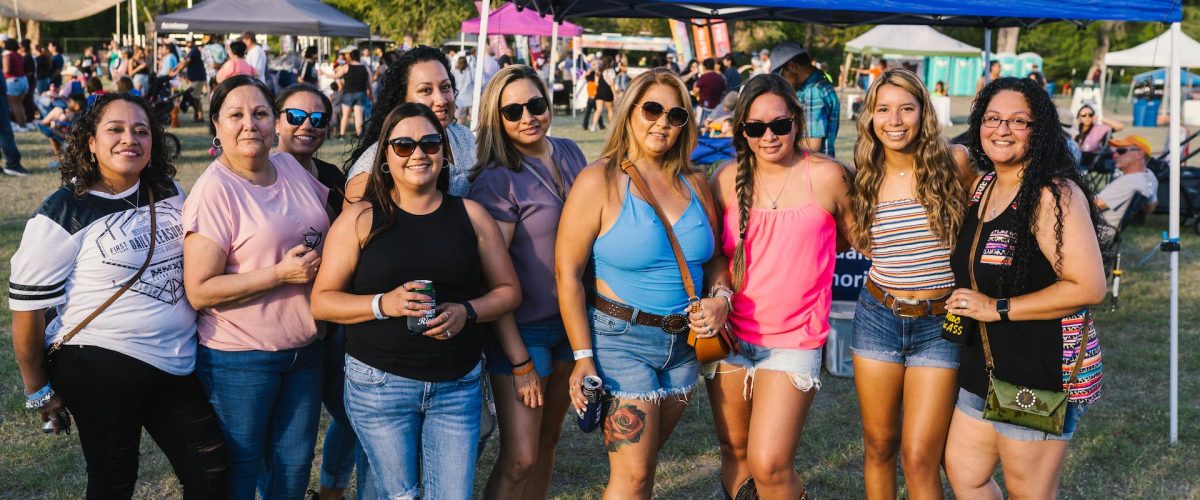There are many elements to festival production just as there are many festival production companies. The best festival production companies share a number of traits. The good ones spend a lot of time planning for the festival; devote quality people in the effort; provide all the services needed for a successful festival; and find ways to minimize their impact on the festival budget.
Whether this is your first foray into festival production, or your festival is long-standing, it’s good to determine or revisit the why, what, who, when, where and how of your festival event. These are the elements when translated into goals, objectives, and key performance indicators (KPIs) all which all planning should be based on.
I believe we would all agree doing so is crucial when producing a new festival. However, even long-standing festivals lose their way over time as organizers, staff and those planning it turn over as the years pass. That’s why planning for the next festival should always begin by returning to the reasons the festival was first founded and adjusting those foundational goals and objectives if needed, considering what has been learned over the years to keep it true to the why, fresh activities, and attract the audience and sponsors you need for a successful event.
For long-standing festivals, producing the next one often starts with the budget and activities of the last one. While there is nothing wrong with such an approach as a place to begin, the planning process needed is often short-circuited with such an approach. Small changes are made based on what worked or didn’t work during the last event. Unless the planning process examines the basic tenants of the festival each year, those small changes add up over time and can end up making the festival something very different than what the initial festival organizers intended.
In the words of Lewis Carroll: “If you don’t know where you are going any road can take you there.”
For those organizing a festival without the benefits of guidelines, consider what the Cheshire Cat told Alice in Lewis Carroll’s Alice’s Adventures in Wonderland when Alice asked which way to go.
“Would you tell me, please, which way I ought to go from here?” “That depends a good deal on where you want to get to.” “I don’t much care where –” “Then it doesn’t matter which way you go.“
— Lewis Carroll, Alice’s Adventures in Wonderland
Fail to Plan; Plan to Fail
is a modern restating of one of Benjamin Franklin’s quotes:
“By failing to plan, you are preparing to fail.”
This phrase in various forms has become a beacon for those involved in creating events, whether they be a festival, conference, concert, or something entirely different.
It should remind us that a well-planned festival or event has the greatest chance of achieving what you want to achieve with it.
Festival Production Begins with These Planning Elements
- Setting Goals: A festival production plan starts with the goals organizers hope to achieve by the festival. Everyone involved in the planning must have a clear understanding of the goals involved. These goals constitute the “why” of the festival. Most festivals will have several goals. Examples of festival goals may include, making money for the festival organizer; raising funds for a charitable cause; driving awareness of a cause or organization; attracting many attendees; celebrating a community’s culture or heritage; etc.. Any planning effort for either a new or long-standing festival should begin by thinking about the reason you are holding the festival.
- Selecting a Theme: Having a theme to use when planning a festival is helpful in a number of ways. The theme captures the fundamental nature of the festival and becomes an essential part of its brand. For example, when we hear or see the term “Renaissance Festival” we have a clear idea about the festival. That’s because of the branding and visibility of local Renaissance Festivals throughout the country.
Another widely known theme is “Dickens on …” We know that these festivals are Victorian-inspired events. Dickens on the Strand in Galveston, Texas is based on 19th Century Victorian London. It’s held in Galveston’s historical district and features many activities and Victorian costumed characters, vendors, and attendees for this weekend event.
These themes are easily explained and understood and represent the nature of the festival. Having a good theme will reveal your vision in a way others can more easily understand. That helps with securing sponsorships, media partners and getting stakeholders on board.
- Determining Objectives or KPIs: While goals set the direction for planning, objectives or KPIs determine how we plan to achieve our goals. Where goals are often vague, objectives are specific. For example, while raising money for a good cause is a worthy goal, raising $50,000 for the cause after paying all debts of the XX Festival is understandable and measurable. Most people use the SMART characteristics when creating good objectives. SMART stands for
- S – Specific: Understandable about what, where, when and how
- M – Measurable: Quantify the performance indicators, i.e., targets, benefits to be achieved.
- A – Achievable: Given the resources and capacities, the objectives can be attained.
- R – Relevant: The objective can be tied to a specific goal you are trying to achieve as opposed to something else.
- T – Time-Based: Objectives should have an associated time period in which to achieve it. Without a time period specified, specific objectives may languish on the to-do list.

I’m surprised that even today people confuse goals and objectives with each other. Perhaps that’s why using the term Key Performance Indicators (KPIs) is used by many in place of objectives. KPIs quantify the specific things you want to measure that are part of your efforts to achieve an objective.
- Identifying Your Target Market and Audience: Once you have your goals, theme and objectives in place and understood by all those concerned in the festival planning process, it’s time to reflect on the “who.” Just what segment of people are likely to be most interested in the festival you are planning? For new festivals, you will begin with finding the audience for your event. That requires doing the necessary research needed to discover the kind of people who are likely to attend festivals like yours. Today’s online world makes that research less difficult than in past years. Your goal is to learn as much as you can about those people who are more likely to be interested in your event. The better you understand the demographics and interests (psychographics) of your potential attendees the easier it will be to reach them with your promotion efforts when the time to do that is right. Before that, the information you learn about your audience will help you during the planning process.
Think about it. The more you know about your target audience, the easier it will be to select festival activities, entertainers, exhibitors, etc. It also enables you to find sponsors, media partners, etc. who are engaged with and want more exposure to the same audience.
Well-established festivals may have a wealth of information about past attendees at the festival. This data on past attendees is exceedingly valuable in planning future festivals and attracting new sponsors and media partners. That doesn’t preclude any effort to add other target segments to the festival. It just means you have real data, not hypothetical data to share with potential stakeholders. Trust me, sponsors and media partners prefer to see the real thing.
One of the best ways to collect useful information about people interested in your event is to use an event app as part of the festival experience. In a future post, I will discuss the desired features of such apps and what that can mean for you in accruing the information you need to plan future festivals, finding funding, interest media and develop festival activities and experiences.
Once you have taken these first steps in the festival production planning process, the remainder of the many planning issues will be much easier. Why? Because these first steps provide a overall design for the festival. The remaining steps are filling in the details of it.
Related Posts:
Get Event Sponsorship Brands Using Good Data
Planning a Festival: Use a Good Timeline
Festival Production: Takeaways from Successful Music Festivals





